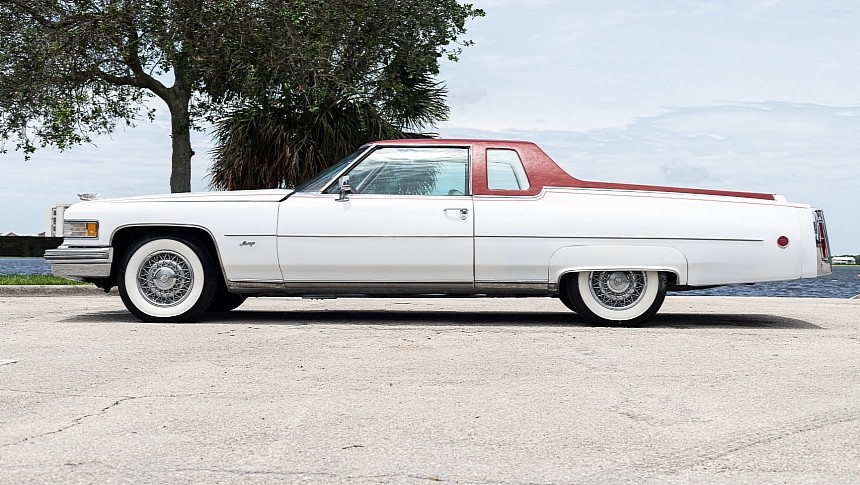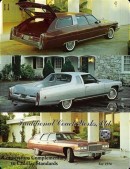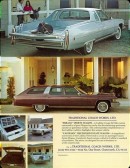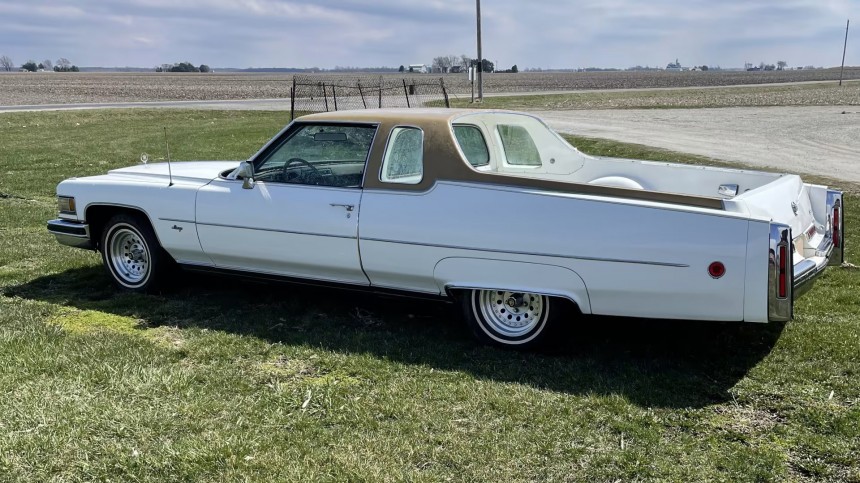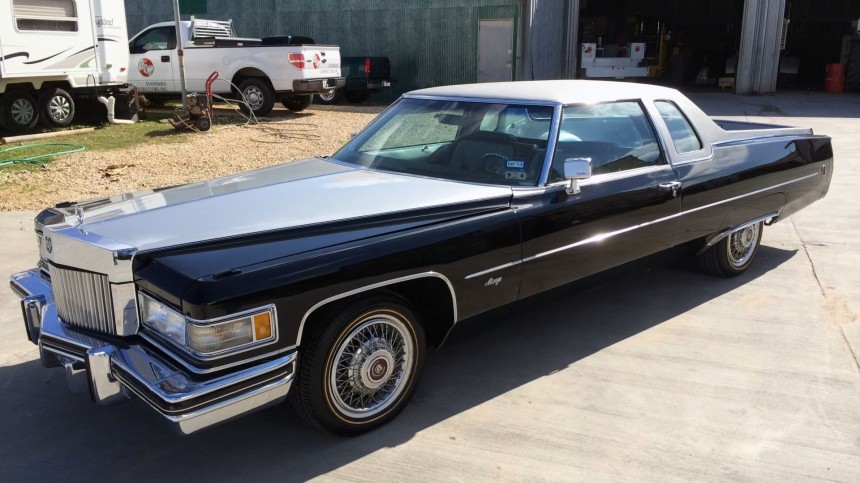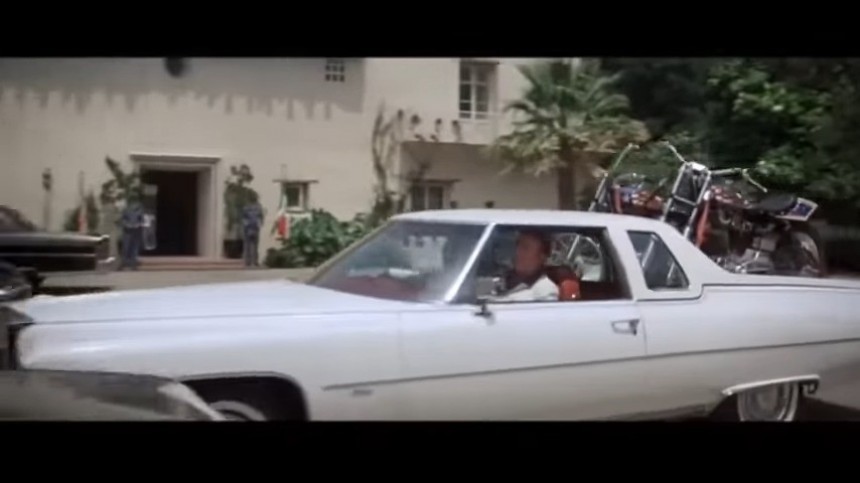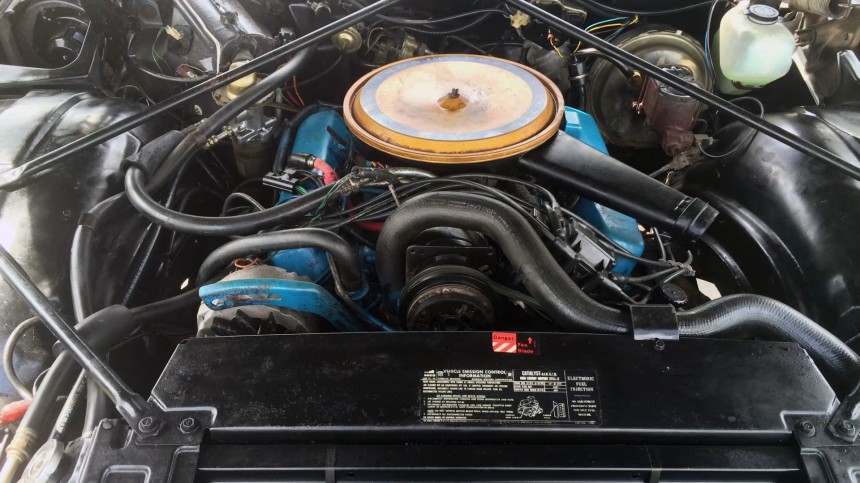Carmakers can’t always satisfy every customer’s needs and/or desires, particularly when the brand focuses on a specific market segment. BMW doesn’t make trucks, Nissan isn’t into motorcycles, Dodge has yet to deliver a sportscar, and Cadillac isn’t famed for the quality of its tailgates and beds. However, the GM luxury brand gets credit for allowing the Mirage to happen in the mid-seventies, albeit with the contribution of a coachbuilding shop.
In 1975, a well-known car customizer and Hollywood builder from California came up with a wild embodiment of an even wilder idea shared between two car enthusiasts a few years before. What would come from a crossbreeding experiment between luxury automobiles and blue-collared working-class utility vehicles? The Mirage was the answer found at the tailgate end of a Coupe de Ville luxo-barge.
America already had the coupe utility vehicle platform covered by Ford’s Ranchero and Chevrolet’s El Camino, and the proper pickup trucks were roaming in their millions. There was, however, a problem with those two nameplates, stuck right in the middle of their grilles: the badges. Fords and Chevys were far below Cadillac owner’s tastes.
After all, one can’t simply be wealthy, get out of a $10,000+ luxury car, and stick one’s alligator-skin cowboy boots in a measly bowtie El Camino. That would say something unpleasant about the owners and their expensive cigars, fancy haircuts, and tailored outfits, wouldn’t it? Enter Gene Winfield, the famous fabricator of custom cars for on- and off-street use.
The coachbuilding wizard looked at a Cadillac Coupe de Ville's ‘back seat and trunk delete’ proposal made by a couple of Caddy loyalists from Beverly Hills. Instead of the second row of seats and customary luggage space, Winfield put a bed and a tailgate, complete with a secluded compartment for the spare tire and other valuables. But the idea sprouted from a Cadillac dealer from Beverly Hills after talking about it over a meal with a friend, according to the son of car salesman.
The Cadillac Mirage was built for just two years, 1975 and 1976, by Traditional Coach Works from Chatsworth, California. No definitive source on the final number is handy. Gene Winfield said the shop produced about 60 units a year. The automobiles were converted from a standard Coupe de Ville that the customer had to buy in advance) to the unlikely Mirage personal utilitarian luxury vehicle. Still, the spin-off didn't catch on enough momentum to generate the snowball effect to convince GM to capitalize on the nonconformist idea.
Long story short, one Friday afternoon in the early seventies, James Kribbs (the manager of the Cadillac dealership mentioned earlier) and his friend Jack Patrick got together to enjoy good food and conversation. As it turned out, they talked about what it would be like if they could convert GM’s luxury cars into trucks and station wagons.
The following Monday, Patrick returned with three sketches of a Cadillac wagon and two utes. Kribbs liked them to the point that he founded Traditional Coach Works to make the cars. The company employed Gene Winfield to build them to Cadillac standards, and they were sold through Wilshire Cadillac.
But there was a catch: factory-built Cadillacs were by no means cheap or even affordable cars for the masses, but the Mirage was in a league of its own. The makeover from pricey personal luxury car to personal luxury pickup was for deep-pocketed eccentrics who didn’t flinch at coughing up another $9,000 to have their brand-new Cadillac butchered.
The very first Mirage was bought by Evel Knievel, the legendary daredevil and stuntman, and used in the 1977 ‘Viva Knievel!’ fictional movie. Drag the slider on the video below at 05:53 and watch the car starring in the film and carrying two motorcycles in its bed.
Despite not being directly backed by Cadillac, the Mirage was still offered with the division’s full warranty available for regular Caddies and was also sold through GM’s luxury brand dealership network. From the front bumper to behind the seats, the Mirage was a full-blown Coupe de Ville through-and-through, offering the same ride quality and plush comfort the marque’s customers were familiar with.
But the resemblances stopped at the rear window. The bed’s floor could accommodate flat plywood 4x8s with the tailgate closed (or two motorbikes side by side). Out of the 200 or so Mirages assembled, 15 had a storage compartment behind the seats (accessible via a right-hand-side hatch behind the door). The space was big enough to fit a golf bag or anything else the owner fancied.
The Cadillac Mirage embodied the term ‘motor overkill’ compared to the mass-produced utes of the time (the Ranchero and the El Camino). Cadillac’s fabled 500-cubic-inch V8 (8.2-liter) plant sat under the enormous hood. But being a 1975 car engine built in America, the torque titan V8 was plagued by the same Malaise disease, eradicating horsepowers faster than Detroit could treat them.
210 horses (213 PS) and 380 lb-ft (515 Nm) pulled the Mirage along, reined in heavily from the beginning of the decade when it produced twice as much power and over 60% more torque (400 hp, 550 lb-ft, or 406 PS and 746 Nm). Granted, in 1970, those specs were rated by the SAE gross algorithms. The standard equipment Turbo Hydra-Matic 400 transmission was paired with the big engine, as the coachbuilder didn’t fiddle with the mechanicals.
Given their rarity, it’s a downright blue moon eclipse to spot one in its natural habitat. The surviving examples (who knows how many are still out there) change hands so seldom that putting a market value on one is a good study in guesstimation. The highest price registered at a public sale in the past five years is $49,500 at the 2022 Scottsdale auction.
Ironically, the event saw two examples sold on the same day, with the second fetching $41,800. Still, the low value recorded is $17,000 – but chances are otherwise very slim to come across one since these unicorns don't have a habit of jumping ship too often.
Amazingly, we found one - in rough shape, unfortunately, as depicted in the ad below - located 40 miles out of Austin, Texas. the 41,000-mile/66,000-km luxo-ute runs, but will require some wrenching beore it can return to the road.
America already had the coupe utility vehicle platform covered by Ford’s Ranchero and Chevrolet’s El Camino, and the proper pickup trucks were roaming in their millions. There was, however, a problem with those two nameplates, stuck right in the middle of their grilles: the badges. Fords and Chevys were far below Cadillac owner’s tastes.
After all, one can’t simply be wealthy, get out of a $10,000+ luxury car, and stick one’s alligator-skin cowboy boots in a measly bowtie El Camino. That would say something unpleasant about the owners and their expensive cigars, fancy haircuts, and tailored outfits, wouldn’t it? Enter Gene Winfield, the famous fabricator of custom cars for on- and off-street use.
The Cadillac Mirage was built for just two years, 1975 and 1976, by Traditional Coach Works from Chatsworth, California. No definitive source on the final number is handy. Gene Winfield said the shop produced about 60 units a year. The automobiles were converted from a standard Coupe de Ville that the customer had to buy in advance) to the unlikely Mirage personal utilitarian luxury vehicle. Still, the spin-off didn't catch on enough momentum to generate the snowball effect to convince GM to capitalize on the nonconformist idea.
Long story short, one Friday afternoon in the early seventies, James Kribbs (the manager of the Cadillac dealership mentioned earlier) and his friend Jack Patrick got together to enjoy good food and conversation. As it turned out, they talked about what it would be like if they could convert GM’s luxury cars into trucks and station wagons.
But there was a catch: factory-built Cadillacs were by no means cheap or even affordable cars for the masses, but the Mirage was in a league of its own. The makeover from pricey personal luxury car to personal luxury pickup was for deep-pocketed eccentrics who didn’t flinch at coughing up another $9,000 to have their brand-new Cadillac butchered.
The very first Mirage was bought by Evel Knievel, the legendary daredevil and stuntman, and used in the 1977 ‘Viva Knievel!’ fictional movie. Drag the slider on the video below at 05:53 and watch the car starring in the film and carrying two motorcycles in its bed.
But the resemblances stopped at the rear window. The bed’s floor could accommodate flat plywood 4x8s with the tailgate closed (or two motorbikes side by side). Out of the 200 or so Mirages assembled, 15 had a storage compartment behind the seats (accessible via a right-hand-side hatch behind the door). The space was big enough to fit a golf bag or anything else the owner fancied.
The Cadillac Mirage embodied the term ‘motor overkill’ compared to the mass-produced utes of the time (the Ranchero and the El Camino). Cadillac’s fabled 500-cubic-inch V8 (8.2-liter) plant sat under the enormous hood. But being a 1975 car engine built in America, the torque titan V8 was plagued by the same Malaise disease, eradicating horsepowers faster than Detroit could treat them.
Given their rarity, it’s a downright blue moon eclipse to spot one in its natural habitat. The surviving examples (who knows how many are still out there) change hands so seldom that putting a market value on one is a good study in guesstimation. The highest price registered at a public sale in the past five years is $49,500 at the 2022 Scottsdale auction.
Ironically, the event saw two examples sold on the same day, with the second fetching $41,800. Still, the low value recorded is $17,000 – but chances are otherwise very slim to come across one since these unicorns don't have a habit of jumping ship too often.
Amazingly, we found one - in rough shape, unfortunately, as depicted in the ad below - located 40 miles out of Austin, Texas. the 41,000-mile/66,000-km luxo-ute runs, but will require some wrenching beore it can return to the road.
